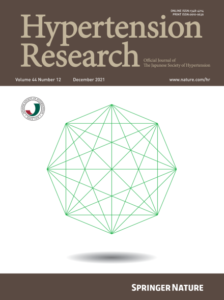Glucose and the risk of hypertension in first-degree relatives of patients with type 2 diabetes
Authors
Affiliations
Abstract
To test the hypothesis that plasma glucose (PG) levels is associated with the incidence of hypertension (HT) in nondiabetic and non-hypertensive first-degree relatives (FDR) of people with type 2 diabetes (T2D). A total of 1089 FDR without diabetes and/or HT of consecutive patients with T2D 30-70 years old were examined and followed for a mean (s.d.) of 6.9 (1.7) years for HT incidence. At baseline and through follow-up, participants underwent a standard 75 gm 2-h oral glucose tolerance test. HT was defined according to the criteria of the Seventh Report of Joint National Committee. We used Cox proportional hazard models to estimate hazard ratio for incident HT and plotted a receiver operating characteristic curve to assess discrimination. The PG levels at baseline were associated with incidence of HT, independently of age, gender, obesity and high cholesterol, high-density lipoprotein cholesterol, low-density lipoprotein cholesterol, triglycerides, education and systolic blood pressure. Those with impaired glucose tolerance were 54% (hazard ratio 1.54; 95% confidence interval (CI) 1.33, 1.77) more likely to develop HT than those with normal glucose tolerance. Those with impaired fasting glucose were also 23% (hazard ratio 1.23; 95% CI 1.01, 1.50) more likely to develop HT. High PG levels were consistently associated with incident HT.
Keywords: blood pressure; first-degree relatives; type 2 diabetes; incidence; glucose; risk factor; Iran

